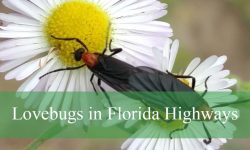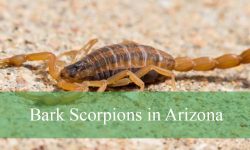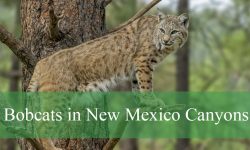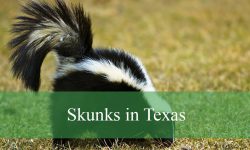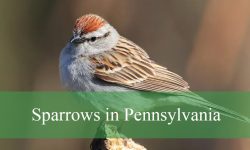Long before Alabama’s forests fill with the morning calls of warblers or the rustle of deer moving between pines, another creature has already completed most of its nightly routine. Quiet, deliberate, and often unseen, the Virginia opossum—commonly called the “possum”—moves through woodlots, river edges, and suburban neighborhoods with surprising confidence. While most Alabamians have seen one crossing a road or rummaging near leaf piles, few truly understand how remarkable this animal is.
Possums in Alabama are more than nighttime wanderers. They are ecological filters, experts in survival, and evolutionary outliers that defy expectations. They climb, swim, navigate microclimates, survive extreme conditions, and even possess one biological advantage so unusual that scientists consider it one of the most important defensive adaptations in North American mammals. What many people assume about possums is often incomplete—or entirely incorrect.
This article reveals the scientific truth about possums in Alabama, exploring their biology, behavior, ecological roles, life cycle, habitat use, and the surprising capacities that make them one of the state’s most misunderstood animals.
Understanding Possums in Alabama

The possum seen throughout Alabama is the Virginia opossum (Didelphis virginiana), the only native marsupial in the United States. Their presence dates back millions of years, making them one of the oldest surviving mammal lineages in North America.
What Makes a Marsupial Different?
Possums carry and nurse their young inside a pouch, similar to kangaroos and koalas. This trait separates them dramatically from placental mammals such as raccoons, foxes, and squirrels. Baby possums are born extremely underdeveloped—about the size of a jellybean—and climb into the mother’s pouch to complete development.
As marsupials, possums reproduce quickly, adapt to variable environments, and demonstrate resilience uncommon in many native mammals.
Where Possums Thrive Across Alabama
Possums live in nearly every Alabama region, including:
-
Appalachian foothills
-
Longleaf pine forests
-
Coastal floodplains
-
River basins
-
Suburban woodlots
They prefer habitats with a combination of dense vegetation, water sources, and access to insects, small animals, fruits, and carrion. Because they are highly adaptable, possums thrive in environments altered by storms, floods, forest thinning, and seasonal vegetation changes.
Biological Features That Define Possums
Possums possess several biological traits that help them survive in Alabama’s shifting environments.
Prehensile Tail and Climbing Skill
The possum’s long, hairless tail functions like a fifth limb. This prehensile tail helps them:
-
Balance while climbing
-
Carry nest materials
-
Stabilize themselves on branches
Contrary to popular belief, adult possums rarely hang by their tails for extended periods. Their climbing ability instead relies on strong hind legs and opposable thumbs on their rear feet.
Temperature Tolerance and Vulnerability
Opossums have a lower body temperature than many mammals, making them naturally resistant to certain parasites. However, this also means they struggle in freezing weather, which is why they grow slowly in northern regions but flourish abundantly in Alabama’s mild climate.
Sensory Adaptations
Possums rely heavily on smell and touch. Their whiskers detect airflow and obstacles, helping them travel confidently at night. Their hearing is acute, but their eyesight is adapted more for detecting movement than fine detail.
Behavior Patterns That Surprise Researchers
Nocturnal Foraging
Possums spend most of the night moving methodically through habitat edges, searching for food. Their slow, deliberate pace gives the impression of clumsiness, but this behavior conserves energy and prevents detection by predators.
Solitary Lifestyle
With rare exceptions, possums are solitary. Their large home ranges often overlap, but individuals avoid unnecessary interaction. This solitary nature reduces aggressive encounters and helps them efficiently explore resources.
Playing Dead: The Automatic Defense
One of the most misunderstood behaviors of possums is thanatosis, commonly called “playing dead.” This is not a conscious action. It is an involuntary neurological response triggered during extreme fear. The possum collapses, its breathing slows, drool forms, and its body becomes limp. This reflex can last several minutes or more and deters predators that avoid carrion.
Hidden Facts About Possums in Alabama
They Have a High Resistance to Snake Venom
Possums show remarkable immunity to venom from copperheads, cottonmouths, and rattlesnakes. They can survive bites that would kill most animals of similar size. Research has identified proteins in possum blood that neutralize venom components.
They Eat Ticks—A Lot of Them
A single possum may consume several thousand ticks in a season. By grooming meticulously, they ingest parasites attached to their fur. This reduces tick populations across Alabama’s forests, benefiting many wildlife species.
Their Memory Exceeds Expectations
Studies show possums remember complex food locations and can recall routes through mazes after longer periods than many similarly sized mammals. Their slow movements often hide an impressive cognitive capacity.
They Rarely Contract Rabies
Due to their lower body temperature, the Virginia opossum has one of the lowest rabies rates among mammals. Cases in Alabama remain extremely rare.
Feeding Ecology of Possums
Natural Diet Across Alabama
Possums are omnivores with a wide dietary base, consuming:
-
Insects
-
Earthworms
-
Fruits
-
Carrion
-
Amphibians
-
Snails
-
Small reptiles
-
Bird eggs
-
Seasonal vegetation
Their flexible diet allows them to adapt to changing food availability across Alabama’s seasons.
Foraging Strategy
Possums seldom chase prey. Instead, they use:
-
Ground scanning
-
Scent trails
-
Opportunistic scavenging
-
Slow stalking of small animals
Their broad diet makes them valuable scavengers, preventing accumulation of carcasses that could otherwise attract disease.
Seasonal Food Shifts
Possums adjust their diet based on abundance:
-
Spring: insects, worms, amphibians
-
Summer: fruits, berries, invertebrates
-
Fall: nuts, fallen fruits, carrion
-
Winter: smaller prey, overwintering insects, carcasses
Their ability to switch feeding habits keeps populations stable year-round.
Reproduction and Life Cycle
Breeding and Gestation
Possums breed multiple times per year in Alabama’s warm climate. Mating begins in late winter, continues through spring, and can occur again in summer. Gestation lasts only about 12–13 days, the shortest of any North American mammal.
Development in the Pouch
After birth, tiny, undeveloped joeys crawl into the pouch, attach to a teat, and remain connected for several weeks. They transition to riding on the mother’s back once they are strong enough.
Juvenile Growth
Young possums learn foraging strategies by exploring alongside the mother. Their natural curiosity drives them to investigate insects, scents, and landscape features. Juveniles disperse by late summer, establishing territories across woodlots and riparian edges.
Habitats Across Alabama
Possums occupy nearly every ecosystem in the state.
Forested Areas
Dense plant cover provides safe movement corridors. Hardwood forests with rich understory vegetation support strong possum populations.
Riparian Zones
Creeks, swamps, and river edges are ideal for possums due to the abundance of amphibians, fish scraps, insects, and shelter.
Pine Forests and Upland Areas
Mixed pine–hardwood ecosystems offer dens, food sources, and stable environments, particularly in central and southern Alabama.
Suburban Ecotones
Possums use fragmented habitats efficiently. Woodlots, hedgerows, brush piles, and drainage areas all support possum movement and feeding.
Seasonal Rhythms of Possums in Alabama
Spring Activity
Possums emerge from winter dens and increase foraging as insects become plentiful. Breeding begins early.
Summer Feeding
Warm nights increase insect abundance. Juveniles begin dispersing.
Fall Transition
Possums build fat stores through high-calorie diets of fruits, nuts, and small animals.
Winter Behavior
While not true hibernators, possums reduce activity during colder nights and conserve energy in sheltered dens.
Ecological Importance of Possums
Natural Scavengers
Possums clean ecosystems by consuming carcasses, preventing the spread of bacteria and maintaining balance in food webs.
Tick Control
Their grooming habits significantly decrease tick density in forested habitats.
Seed Dispersal
Possums eat various fruits and release seeds through droppings, helping regenerate native plant species.
Prey for Higher Predators
They serve as important prey for owls, bobcats, coyotes, and large raptors, maintaining predator food chains.
Myths and Facts About Possums
Myth |
Scientific Fact |
|---|---|
Possums are rodents. |
They are marsupials—the only native ones in the U.S. |
They hang by their tails. |
Only juveniles can do this briefly. |
Possums are aggressive. |
They are shy and prefer avoidance behaviors. |
Playing dead is intentional. |
It is an involuntary defense response. |
They commonly carry rabies. |
Extremely rare due to low body temperature. |
Frequently Asked Questions (FAQ)
Are possums common throughout Alabama?
Yes. They inhabit every county and thrive in forests, wetlands, and semi-urban areas.
What do possums naturally eat?
Insects, fruits, carrion, small animals, worms, and seasonally abundant vegetation.
Are possums marsupials?
Yes. They are the only native marsupials in North America.
How long do possums live in the wild?
Typically 2–4 years due to predation and natural risks.
Do possums hibernate?
No. They remain active year-round but reduce activity in cold weather.
How many young do possums have?
Females may have 8–13 joeys per litter, with several litters per year in Alabama.
Where do possums nest?
In hollow logs, brush piles, tree cavities, abandoned burrows, and sheltered natural structures.
Do possums help control ticks?
Yes. Their grooming behavior removes and consumes large numbers of ticks.
Final Thoughts
The possums in Alabama represent one of the state’s most adaptable and misunderstood native mammals. Their survival strategies—marsupial reproduction, venom resistance, omnivorous diets, and sophisticated sensory adaptations—allow them to thrive in landscapes ranging from dense forests to river valleys and fragmented suburban edges.
Understanding their ecological roles gives new appreciation to this often-overlooked species. As silent engineers of nutrient cycling, tick control, and scavenging, possums contribute significantly to the health of Alabama’s ecosystems. Their presence reflects a natural heritage far older than most wildlife residents of the state, shaped by forces of evolution and ecological necessity.

